
|   |

|   |
Tara Chaudhri - Pavlova of the Punjab! - Ashish Mohan Khokar Credit: Rare pics and document from The Mohan Khokar Dance Collection October 9, 2013 Kasuvandi, the detective of dance based films and cinema buff from somewhere in the outer space (blog writers sometimes don't want true identity be known, especially real name and provenance) first sent me info that Tara, the great, had passed away. That Tara Chaudhri, popularly dubbed the Pavlova of the Punjab, died on Sept 22, 2013, unsung in India, is not surprising. No obit, no news, no mention. So it is left to me, yours truly, to reconstruct her life and times. I'm additionally in a very privileged position because our families also knew each other personally. A direct source of that period is my mother, Bharatanatyam guru M.K. Saroja, who knew Tara personally, stayed with her in Lahore in undivided India and had common links due to Guru Muthukumaran Pillai, whom Ram took to Lahore to teach Bharatanatyam. Many moons later, Tara came home to us in Delhi in mid 70s when Ram was visiting us and even having left active dance for years, she looked like a royal star. Once a dancer, always a dancer. 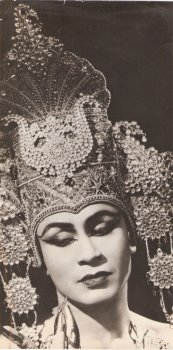
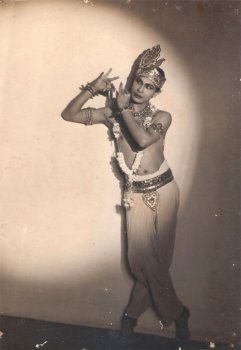
Ram Gopal
The great Ram Gopal (of Bangalore) had an eye for beauty in art. He was
the ultimate in aesthetics and costumes, artistry and creating magic on
stage. When he came on stage, it was like a god had come alive. He was
thus very particular about who partnered him on stage and he always
looked for beauty of form and line in dance and on stage. He partnered
many sensations, dancing stars of the times and Tara remains the most
important one before India got partitioned. Once India got partitioned,
the cultural capital of north - Lahore - went to Pakistan and thus we
lost Pavlova of the Punjab to Pakistan. After Independence, Ram also
settled in England. As his authorized biographer, I was told by him that
he felt slighted post-independence by the govt. under Pt Nehru, which
denied him land to build an institution, so he, in a huff, left India
and settled in London. Those days even visas were not required. Yes,
there were such times, just 40 to 50 years ago!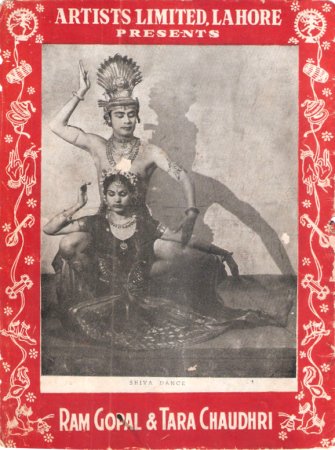
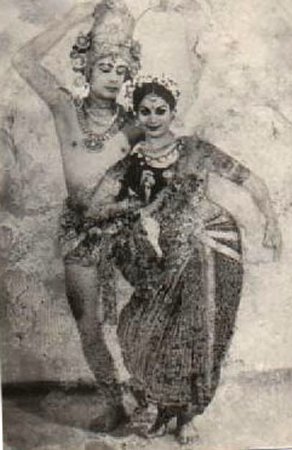
Ram Gopal & Tara Chaudhri
Ram and Tara were a dancing pair, like Ram became later with Shevanti,
Mrinalini and much later Kumudini. Ram was the first male solo dancer
who toured the West and took the best from India. This was the 1930s and
40s and Ram created several productions that were magical and
meaningful. They were not classical dances but based on classical forms.
Once asked about his beautiful and royal body, Ram replied, "My left
side is Bharatanatyam and the right side is Kathakali and in my legs lie
Kathak!" He epitomized all main forms prevalent then. Orissi was not
even on national radar then or established and Kuchipudi was still a
village, melam art form. These four forms mentioned above were the most
learnt and danced styles before independence. 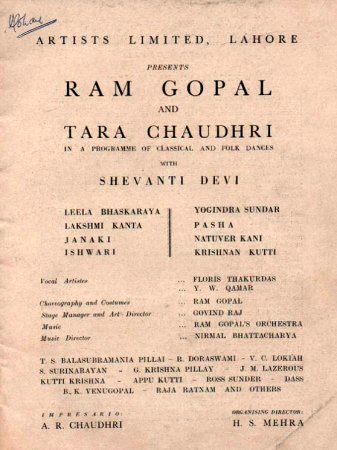 Program flier
Tara Chaudhri was brought to dance by her brother A.R. Chaudhri who spotted the talent of his sisters Tara and Rani. They were trained in Kathak by Pt. Pyare Lal of the Punjab gharana. Yes, there was one such gharana of Kathak, now lost forever. But before Mohan Khokar died on Sept 17, 1999, even when cancer cells depleted his energies, I recorded him for over 500 hours and thus have many histories safe with me and on record from a direct source. I also made him muster enough energy to pen (he actually typed it himself) his last article for the first issue of attendance and he chose the subject: Indian Dance in Lahore and Lanka, Two Forgotten Outposts. It is a must read for all dance buffs and I plan to put it on the Internet, on www.attendance-india.com and www.narthaki.com as even we have only one RESERVE copy left of that inaugural issue of attendance, 15 years ago! The Punjab gharana of Kathak was akin to Patiala gharana of music, represented by stalwarts like Ustad Bade Ghulam Ali Khan sahib and today Ajoy Chakraborty is the current continuity. In Undivided India, there was Punjab with Lahore as the cultural capital. Almost like what Tanjore was to Tamil culture, Lahore was to Punjab. In one stroke of pen on a map, the division of India by our sly British rulers, Lahore, just 40 km from Amritsar went to Pakistan. Today Telangana is taking shape on similar divisive lines and Hyderabad will suffer. We humans seem to learn nothing from history! Tara and Rani were two very beautiful sisters, so beautiful, that to impress Rani, a young Punjabi lad, Defense Commissioner of Lahore's son no less, Mohan Khokar, my late beloved father, fell head over heels in love with Rani but she was besotted with Kathak. To impress her, this military commissioner's son with absolutely no background in dance, went to learn Kathak and that's how he came to learn from her guru Pt Pyare Lal, who after partition shifted to Filmistan area in Delhi and the last film my Kathak guru Kundanlal Gangani took me to see was Pakeezah in Filmistan! Life is a circle, or cyclic. 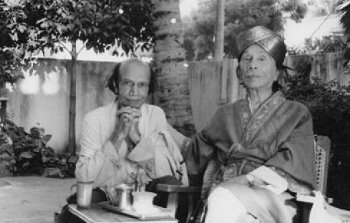 Mohan Khokar and Ram Gopal Photo taken at Madras home by Ashish Khokar Tara and Rani's family were seths or choudhuries, village headmen clan and thus as eminent citizens of the city, often hosted artists and thus when a "Madrasi" group of dancers and musicians came from Bangalore and Madras (Ram Gopal with Guru Muthukumaran Pillai with child protégé, 9 year old M.K. Saroja), they stayed with Rani and Tara's family for months. My mother recalls Tara giving her first sets of glass bangles, her first trinket because in south and Madras of yore, no one wore anything artificial but wore real metals only. Tara Chaudhri was dancing diva of 1930s through 40s. Then Partition of Punjab, India happened and singular biggest loss culturally to north India. Delhi had no culture, it was a village. Lahore was the cultural capital of east like Paris was of West. This history is unknown and forgotten by rest of India, specially south, which sang and danced on without any disruptions for centuries, which is why the insularity of south ensured survival of its culture and temples too. We often forget that but as I have best of many worlds, north, south, east and west and then the Western world, I see this polarity and loss through partition, differently. Rani died some years ago and now Tara. The last great of Indian dance in Punjab of the golden era 1930s-40s is gone. In her last mail to me few months ago, her niece Nadia, now living by some strange karmic coincidence in the same city my elder brother Nandan lives in Sweden - Gothenburg - wrote: "Tara Aunty is planning her biography..." I readily offered to help. She agreed and was delighted at the offer. Alas, that story may never get written in the way she would have wanted it to be. We have lost Tara, the great, but we can still see a shining star up there. Amen! 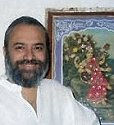 Ashish Mohan Khokar is a reputed critic, historian, editor and publisher of Indian dance. Having learnt several styles, he served many cultural bodies like the Delhi State Academy: Festivals of India in many countries; INTACH (under PM Gandhi as Chair); Martand Singh Consultants before taking to arts writing as main critic of the Times of India for 20 years. For last 15 years he has edited India's only yearbook on dance - attendance. He has authored over 40 books on Indian arts, heritage and spirituality. He has helped revive male solo dancing by instituting awards, organizing academic discourses and mentoring many talents. He is associated with several universities like Baroda, Bangalore, Berlin and Bombay and is a widely read columnist on the net. More details on www.attendance-india.com  Responses * Thank you, Ashish, for writing such a nice tribute to the late Tara Chaudhri with personal family anecdotes. Readers may be interested to know that there are videos online of Tara dancing in the 1940s and 1950s: in the film Vedhala Ulagam and Russian footage at the online digital Net-Film archive. I posted about these videos are other information/pictures about Tara here and here, for those interested. Also, I wonder if the Punjab Gharana of Kathak is the same as the Janakiprasad / Benaras Gharana, of which Sunil Kothari noted in his book on Kathak that Tara studied under Ashiq Hussain Khan (who was also apparently a famous film star in his day!). Sunayana Hazarilal seems to be one of the main remaining exponents of that Gharana today. May Tara rest in peace. Regards, Minai (aka Kasuvandi, etc!) Oct 10, 2013 * Kasuvandi raises an important point regarding gharanas (or banis, as dubbed in the south). This remains a very misunderstood concept, even by us Indians! Originally, a gharana signified a min of 7 - read seven - generations that made up a gharana. Thus, when a musician like Ustad Amjad Ali Khan says he is of the so and so (Senia) gharana, he can actually trace it back to seven continuous generations of playing sarod. In dance, the same does not apply and more so in south, where banis are simply made up against name of village (Vazhuvoor, Pandanallur) or even institutions now, like Kalakshetra. The case of Punjab Gharana gets more interesting and compounded. Attracted by Janaki Prasad's success, his brother's two sons, and their two grandsons made their way to Benaras. In the third generation was a certain Ganeshilal, who had three sons, the youngest named Gopal. After receiving his training, Gopal served as court dancer in Khairagarh, Kapurthala, Kashmir and finally established himself in Lahore. By the time, he had earned enough merit and fame and came to be addressed as Pandit Gopal or Gopalji. To him goes the credit for introducing Kathak in a big way to the Punjab. Till his end, he functioned only out of Lahore and to him goes the credit for the Punjab gharana to gain currency. From his stable arose many dancers, including Tara. Very late in life Pt. Gopal was blessed by a son, Krishna Kumar who became the sole inheritor of the Punjab gharana and he would have held his own, no doubt, had not partition happened, due to which he had to shift to Delhi and rest is history! He undertook many Kathak cameos and danced with the likes of stars like Kumudini Lakhia in productions like Malati Madhav done by Delhi's Bharatiya Kala Kendra. He played Krishna to Birju Maharaj's Kamadev! (and Maharaj- ji jokingly told me in my 1996 FirstCity column that he wanted the role of Krishna …) Our gharanas are very complex business and few can make sense of it. Indian history is never linear like western sometimes can be. Even our concept of time is cyclic. That's why we have concepts of rebirth and karma. We have layers of oral traditional and interwoven histories from clans, castes, sub-castes. We live with it because we are used to traversing a minimum of few hundred years at any given time. For more details, read my future DH columns on banis and gharanas! - Ashish Mohan Khokar (Oct 17, 2013) Post your comments Pl provide your name and email id along with your comment. All appropriate comments posted with name and email id in the blog will also be featured in the site. |